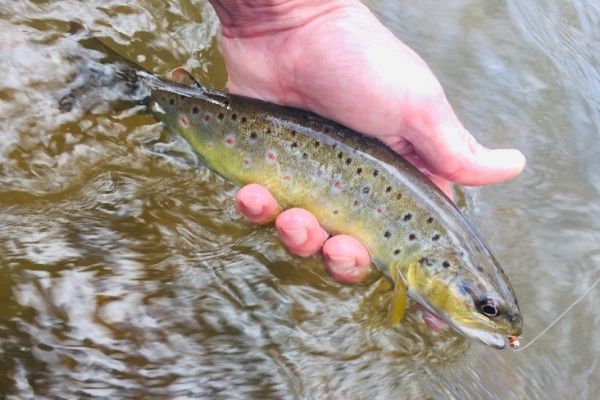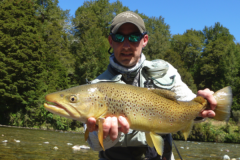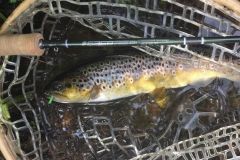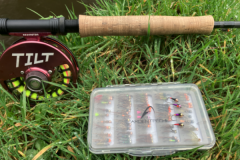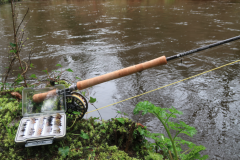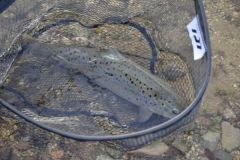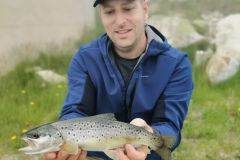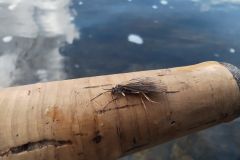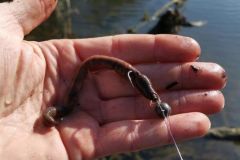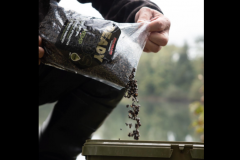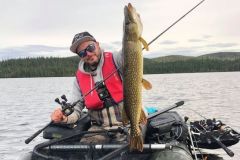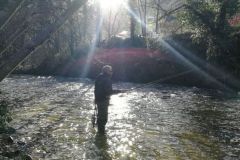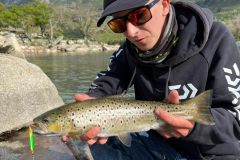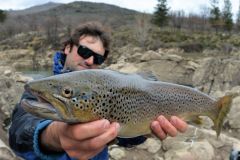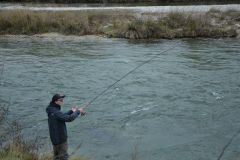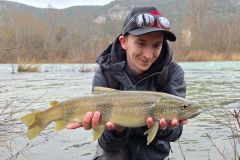Strong flows at the start of the season
Last Sunday, after dropping my daughter off at a friend's birthday party, I headed for the water's edge. I've got a little two-hour fishing slot to indulge myself and get back to one of my favorite areas on Quimper's main river, the Odet.
Flows are rather strong at the start of the season, as we were lucky enough to have had a lot of precipitation during the autumn and winter. Levels are therefore very high and not easy to fly-fish, but this bodes well for the rest of the season.
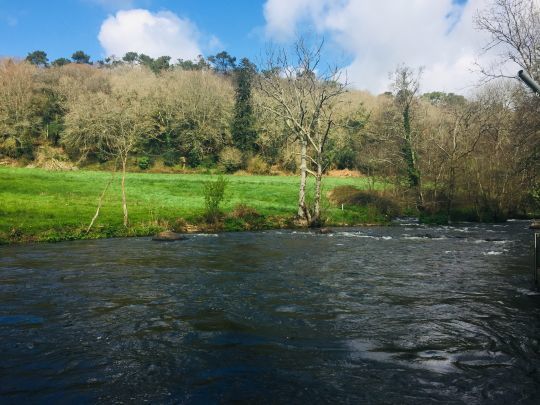
Find the right veins and pass through
Given these conditions, I immediately set up my rod for line nymphing (known as NAF), and today I'm going to test the new SAGE Sense in 10-foot 3-grain line. This technique allows you to fish close to the bottom and pass slowly by the fish or their hiding places.
To begin with, you need to look for and quickly identify where the fish feel comfortable feeding, and at the start of the season, trout tend to settle in the side veins. This doesn't mean you shouldn't try faster currents, and it's by testing that you find the right water level and speed. Trout know how to use the river's natural counter-currents and cushions to position themselves and intercept drifting larvae.
So I've chosen to use different nymphs to get started and test things out, but it's still with my favorite nymph, especially for the first few weeks when the waters are a little tinted and cold. It's a hare's ear mounted on a Hanak size 10 jig hook, with an orange tag behind the copper ball. A flash krystal hoop also appeals to them.
For each water vein, you need to choose the right ballast, and I always start a little lighter to see if they're active and fetching. If they're not, I use a heavier bead to get closer to the bottom, or even make my nymph bounce off the pebbles.
I'll be alternating between a 3.3 and a 3.8 ball, but keeping the same model, which they like and in which I fish with confidence.
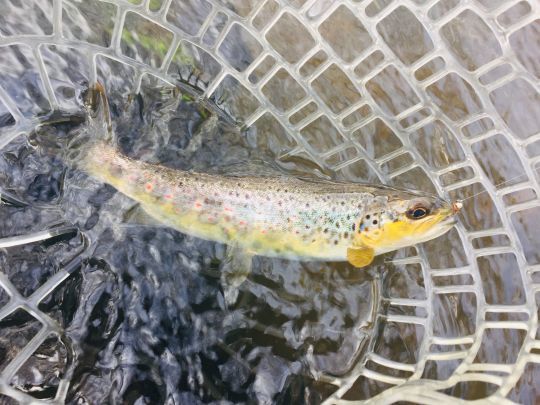
Trout are active despite high flows and low temperatures
The first trout was soon caught. It was on an edge where the current was slowing down. In fact, I'm on a fast section of the Odet, downstream from the Stangala gorges, just upstream from Quimper. It's a really beautiful stretch, especially for wire nymphs. The current is strong, however, making it impossible to enter or cross the water. So I skirted the left bank and skipped all the fast sections where I thought a trout would have trouble holding on, or at any rate would lose too much energy for the gain/loss ratio to be worthwhile.
I'd catch 3 trout in small, calmer areas on the edges of large veins, including one pretty one that was in the cushion of a large pebble in the middle of the current. She must have taken advantage of the slower current to post up and take anything that came her way. My 3.8 nymph was caught on the first run after changing bead size, as the 3.3 was too high.
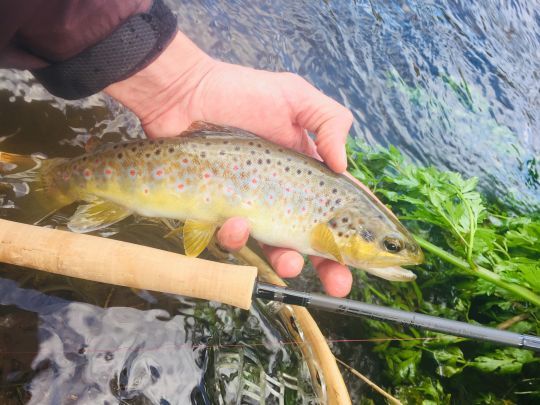
Finally, I arrive at the spot I wanted to go to, as it forms a small plateau and the current slows down. On the first cast, I landed a nice 25/26 cm trout in great shape, making good use of the current. Then I changed again to 3.8. A few drifts later, a very nice 30 cm trout (for us in Brittany, where trout growth is slow) intercepts my nymph. She takes off like a rocket and grabs a few meters of line. Nice! I bridle her a little and move around so I can steer my rod, avoid the branches and bring her close to the bank, then into my landing net. She's already started to rebuild her health and her belly is full.
The trout are active this morning, as the waters are fine and we've had fairly mild temperatures this week. A few insects are coming out, including some nice march browns ( Rhithropgena germanica ), which thrive in fast-flowing waters paved with large boulders. They often bring out the beautiful trout, given their size and sometimes their dense hatching.
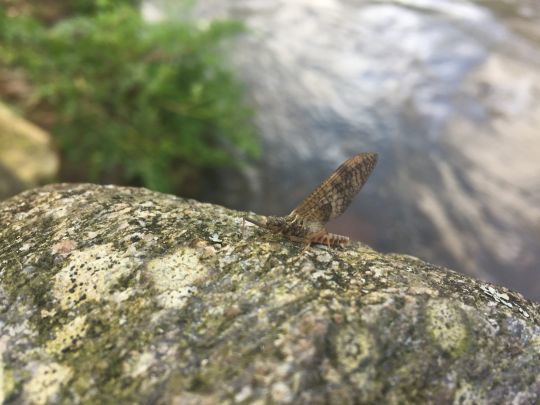
In this same sector, I caught a total of 5 trout on different veins. They had to group together to find the right depth and current speed. They're in great shape and starting to enjoy themselves! It's time to leave the river, with the desire to return as soon as possible!
